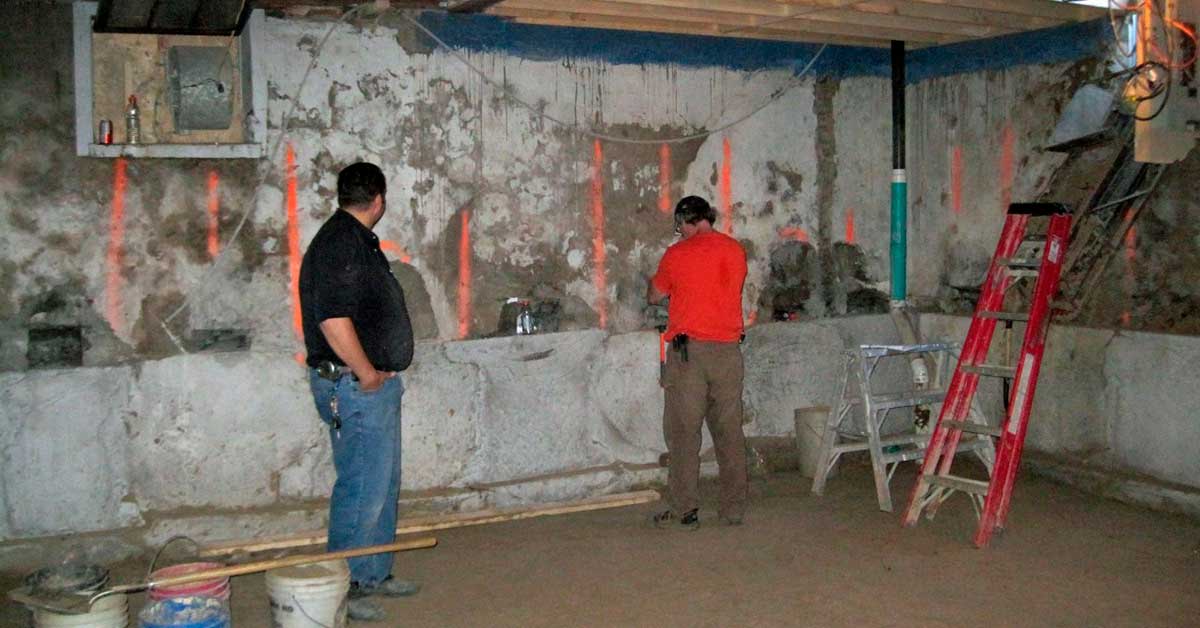Yes, basement underpinning job requires permit and architectural drawings. It shows necessary structural work that has been approved by licensed engineer. Underpinning Permit is created for calculating loads for new footings and foundation walls that need to be poured.
All structural work in Ontario is required to have drawings with appropriate permit. Some companies try to go around the rules and save few thousand dollars only to later find out that their job has been shut down by ministry of labor and fines are issued for working without permit.
Home owners should shut their door immediately in front of contractors that propose structural work without the permit to save money or time. On the day of estimate our project manager will explain what permits and reports are needed from the city to start the job of lowering basement.
Architectural Drawings for Project
In order to submit required changes of your house to the city for approval everything needs to be reflected on professional drawings. City officials have to be able to understand requested changes with structural details. This step is absolutely necessary for contactor to understand what has been asked by the architect to do and approved by the city.
These architectural drawings will have necessary details of how the work should proceed with structural supports and changes to the building. Our team works with architects that can assist in creating proper drawings for the underpinning project at your home.
Engineers and Stages for Home Underpinning
Each underpinning is performed in sections. To continue support entire weight of the house on existing footings and at the same time extend them, underpinning is usually done in three or four stages. Entire exterior wall is divided into approximately two to three foot sections and all of them are marked as per engineer.
In the beginning all number one sections throughout the house are dug out and footings are extender to appropriate height. After each stage city inspector or engineer has the responsibility to approve the work to proceed forward. The same process continues until all sections for footings are completed.
Costs for Permits and Drawings
Expenses start with architectural drawings. Depending on size of the basement, structural changes and necessary beams the cost can range from $2000 to $6000. Structural engineer charges between $500 to $1000 for reviewing the drawings, approving them with stamp and submitting for permit.
The actual permit fee from city for basement underpinning is on average $800. Basic 800 square foot basement with average depth increase without complicated structural changes will cost around $4000 for all drawings and permits.
Additional charges may be for requested visits of structural engineer, requests from home owner to change the layout and resubmitting the drawings.
Timing for Basement Underpinning Permits

If your basement is completely open and architect can see the structure of the joists with supports, all drawings can be completed within two weeks for average size basement. Engineering part with stamps and approval can be done quite fast and only within one week you can be ready to submit for the permit.
After submitting everything it all depends on season and how busy permitting department is. In best case scenario during the winter your basement underpinning permit can be approved within two weeks.
In more busy times it can take up to 5 weeks for the answer from city officials. Delays may occur in uncovered basement, with additional architectural remarks after demolition. Overall the process of obtaining permit takes six to eight weeks.
What Happens if Work Done without Permit
Company that is doing the work at home for underpinning will not provide proper warranty without permit. There will be simply no ground for home owner to approach them if something goes wrong. Permitting is responsibility of the property owner and he or she needs to follow local bylaws.
Let’s say you proceeded with the work knowing there must be permit obtained for home underpinning but never got it. Neighbors can complain about ongoing work and city inspector or official may stop by to check things out.
When they find out there is ongoing project without open permit, project gets immediately shut down until proper documents submitted. Home owners may be charged with hefty fee as well.
The last point on problems associated with not getting permit is the actual quality of work. How can professionals perform such a technical project without approved engineering details? There will be mistakes and shortcuts made if third party does not get involved for inspections and quality checks.
Exception when Permit for Underpinning not Required
The only situation where we think permit is not required for home underpinning is in areas where local bylaws do not include such previsions. You will almost never see it happening, but very rarely there are properties literally in the middle of nowhere. They build what they want and however they feel is suitable for them.
Underpinning projects are very technical and can cause entire structure to fall down if not performed with caution. Even in areas where there is not inspector to oversee the job, we still suggest contacting engineer or architect for confirmation of work process.
Conclusion for Underpinning Permit Requirements

We cannot stress enough on safety of construction projects. Underpinning of a house means literally lowering down its foundation walls with footings to create space below ground. In order to do that, entire wright of the house has to be temporary put on something while walls extend down.
There is no good reason to ignore precautions and local bylaws. Charges from building inspector are only the beginning of worst things that could happen.
Home owners can spend extra tenth of thousands of dollars to redo half of project when caught doing illegally and obligation to change most of work. Who can you blame when your house collapses due to avoidance to architectural and engineering specs?
On Point Remodeling strongly advices all home owners who plan to proceed with underpinning project to carefully approach work process and complete all necessary permits. Contact local authorities and they would be happy to guide you in the right direction.





